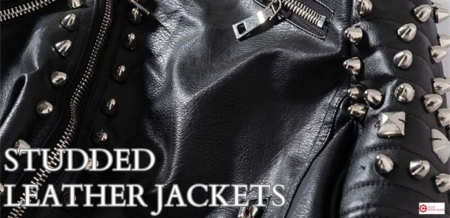What are compression socks?
Socks can be used to get more than keeping your legs or feet warm and dry. However, wearing specialized socks, such as compression socks, helps prevent and improve many health conditions. Compression socks are designed to put moderate pressure on your legs and ankles. They are also considered the best devices to help improve blood flow from your legs to your heart. Compression socks are of different types and styles, helping you choose the accurate product according to your needs. The following are the three common types of compression socks used nowadays to get better results accordingly:
Graduate compression socks: Graduate compression socks provide the strongest compression at the ankle, which decreases up toward the knees. Your GP or healthcare professional will recommend wearing graduated compression socks if you suffer from orthostatic hypotension or peripheral oedema. Remember that graduated compression socks require professional fitting and doctors’ prescriptions.
Anti-embolism compression socks: Similar to graduated compression socks, anti-embolism compression socks provide strong pressure from the ankles to the knee. However, these are especially recommended for people who are immobile. Experts revealed that wearing anti-embolism compression socks helps reduce the chances of developing deep vein thrombosis, DVT. Like graduated compression socks, anti-embolism compression socks require a doctor’s prescription.
Nonmedical support hosiery: These types of compression garments do not require a doctor’s prescription and are easily accessible at most pharmacies. However, these compression garments provide the same compression level and are best in offering relief from achy and tired legs.
Compression socks are supportive garments that can be used anytime after your healthcare professionals recommend doing so. These are helpful for both men and women, and people of all ages can wear compression socks under the instructions of their healthcare professionals. In this article, we are going to discuss the possible benefits of compression socks for women. As well as this, you can get better guidance in choosing the best compression socks for women.
Benefits of compression socks for women
Compression socks provide you with a number of benefits. However, the following are the leading or key benefits of wearing compression socks for women:
- Better blood circulation and less pain
Women who are involved in routines where they are required to stand for a long day or stay at the desk may feel aches, pain, swelling, and other discomforts. Compression socks help improve blood circulation, so most healthcare professionals recommend wearing them in such routines. The improved blood circulation keeps your legs fresh and active throughout the day.
- Reduce swelling
Compression socks are considered the best tool for reducing swelling in your legs and feet. Compression socks work to promote or improve blood circulation in your legs. The compression from the socks works to moderately push the blood flow up the legs, helping prevent swelling and other discomforts from your legs and feet. Swollen or heavy legs may disturb your routine, and if you are a working woman, it will be very difficult for you to perform well. That’s why healthcare professionals suggest wearing compression socks during your working hours to prevent swelling and other discomforts.
- Improve athletic performances
Athletic women, such as runners, footballers, soccer players, and others involved in strenuous activities, are more prone to leg injuries. The common causes of pain and injuries are overuse and repetitive movements in athletes. Wearing compression socks and other feet or leg braces helps improve blood circulation, offering you an injury-free sports experience. Athletic women can wear compression socks during practice and sports sessions.
- Help in pregnancy
During pregnancy, the woman’s body releases a hormone called relaxin that helps loosen the ligaments. Loosening the ligaments helps in the birth process, but these can also cause some problems, including body pain and aches. As well as this, leg cramp is a common problem that pregnant women experience. Stretching can help pregnant women with leg cramps, but it is not the proper solution. In some cases, pregnancy also makes women susceptible to developing some venous diseases, such as deep vein thrombosis. Wearing compression sleeves reduces the chances of DVT. As well as this, they help reduce swelling and aches.
- Help in travelling
During travelling, especially long-distance flights, you get fewer chances to walk and stretch your legs. It can disturb blood circulation, causing leg problems. Wearing compression socks during travelling helps promote blood circulation, reducing the chances of leg pain, swelling, and other discomforts. You need to consult your healthcare professionals before travelling and must wear compression socks if they recommend doing so.
- Prevent and treat venous diseases
Venous diseases are caused by blood pressure problems in the legs’ veins over time. It usually happens in people who sit or stand for long periods. Wearing compression socks helps maintain blood pressure and prevent venous diseases. As well as this, compression socks are also helpful in reducing symptoms of venous diseases.
How to select the right compression socks for women
Experts suggest the following tips helping choose women the best compression socks for them:
Compression level: Compression socks are different from normal socks and are categorized into several categories based on their compression level. Compression level varies from mild to moderate and extreme level. It is better to consult your GP and ask them for a better compression level accordingly. Moreover, you must also know the right time duration for wearing these compression socks, as wearing them for a prolonged time may also cause a disturbance.
Size: Poorly fitted compression socks will do nothing for you but may also cause some other problems. Compression socks should be tight enough to provide needed compression and support to your legs and feet. Remember that graduated and anti-embolism compression socks require proper fitting to get maximum benefits.
Material or fabric: Compression socks are made up of different materials or fabrics, and these include cotton, nylon, spandex, neoprene, and natural rubber. You need to choose the material or fabric that suits your body and is comfortable for you






